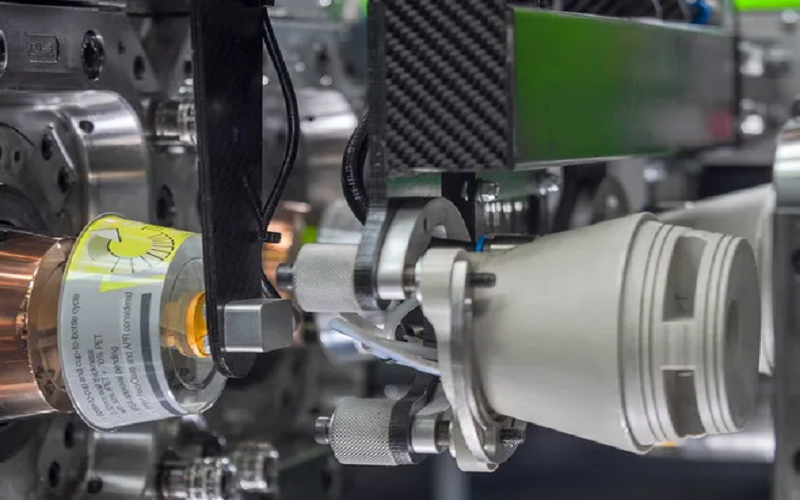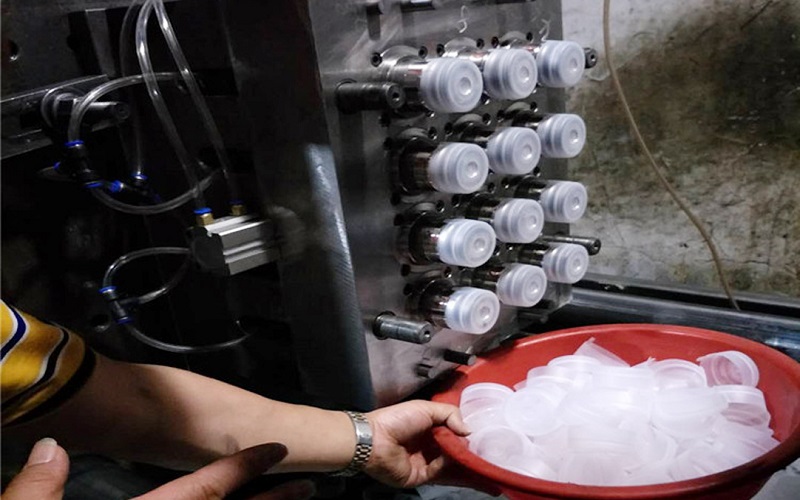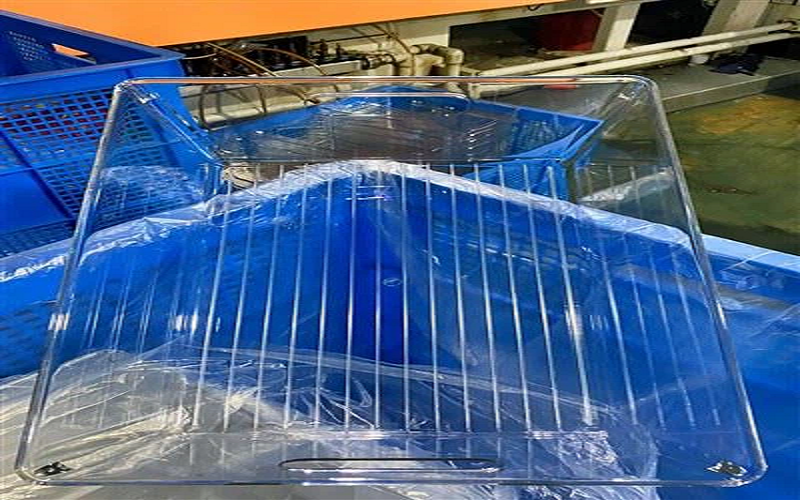In the ever-evolving world of manufacturing, PET injection molding stands out as a cornerstone technology for producing high-quality, durable, and precise plastic components.
Polyethylene Terephthalate (PET), renowned for its strength, clarity, and recyclability, is a preferred material for industries ranging from packaging to automotive.
This article explores the intricacies of PET injection molding, highlighting its benefits, applications, and why it remains a vital process for businesses seeking efficiency and sustainability in production.
What Is Polyethylene Terephthalate (PET)?
PET originates from the term “Polyethylene terephthalate”, it is a high polymer produced from the esterification and polycondensation of two monomers, ethylene glycol and terephthalic acid.
When PET is used in fibers or fabrics, it is usually referred to as “polyester”; when used in container and packaging applications, it is commonly termed “PET” or “PET resin”.
PET containers and packaging are typically created through injection molding or extrusion techniques, which form the initial shapes such as parisons or films.
PET is the most significant type among thermoplastic polyesters, with a repeating unit having a molar mass of 192g/mol. It is a condensation product of terephthalic acid and ethylene glycol.
There are various grades of PET, each with specific properties tailored for applications like packaging, engineering, and electrical components. Together with PBT, they are collectively known as thermoplastic polyesters or saturated polyesters.

Material Properties Of PET
PET offers outstanding physical and mechanical properties across a wide temperature range, with a long-term use temperature of up to 120°C.
It demonstrates excellent electrical insulation, maintaining strong performance even at high temperatures and frequencies, though its corona resistance is relatively low.
PET has ester bond, decomposition occurs under the action of strong acid, strong alkali and water vapor, resistance to organic solvents, good weather resistance.
In addition to these properties, PET exhibits low moisture absorption compared to many other plastics, making it highly suitable for applications requiring dimensional stability and durability in humid environments.
Its good chemical resistance allows PET to withstand exposure to various chemicals, making it ideal for industrial applications as well as consumer goods.
Moreover, PET shows excellent wear resistance, which contributes to the longevity of molded parts used in automotive and mechanical components. PET’s flow characteristics allow it to efficiently fill complex molds, ensuring high-quality molded parts.
These combined material properties make PET a preferred choice for producing high-precision molded parts, especially in packaging applications such as food packaging, beverage bottles, and plastic bottles.
PET’s versatility enables its use in diverse applications ranging from the food industry to industrial applications, meeting the demands of manufacturers and customers for durable, reliable, and sustainable products.
Property | Value |
|---|---|
Relative Density | 1.38 g/cm³ |
Tensile Strength | 50–80 MPa |
Melting Point | ~250–260°C |
Shrinkage | 0.2–1% |
Water Absorption Rate | 0.6% |
Oxygen Transmission Coefficient | 50–90 cm³-mm/(m²-d-MPa) |
CO2 Transmission Coefficient | 180 cm³-mm/(m²-d-MPa) |
Conditions Of PET Injection Molding Process
As a common technology in plastics manufacturing, optimal results in PET injection molding depend on adherence to specific process conditions.

Drying Treatment
As PET macromolecule contains lipid group, it has certain hydrophilicity, the pellet is sensitive to water at high temperature, when the moisture content exceeds the limit, the molecular weight decreases in the injection molding process, and the injection molded products will be discolored or become brittle.
Therefore, before PET plastic injection molding, the pellets must be dried, its drying temperature is 100-120 ° C, drying time 3-4 hours. Note that PET recycled material must not exceed 25%.
Injection Molding Machine
Injection Molding Machines are used to produce these PET Preforms for Beverage Bottles and Wide mouth Jars.
And the actual weight of the injection molded PET product + spouting material can not be less than the machine injection volume of 2 / 3.
Cylinder Temperature
PET molding temperature range is narrow, the temperature will directly affect the performance of the product.
Cylinder temperature control at 240 ~ 280 ℃, glass fiber reinforced PET cylinder temperature of 250 ~ 290 ℃, shall not exceed 300 ℃, the nozzle temperature is generally lower than the cylinder temperature 10 ~ 20 ℃.
Mold Temperature
Mold temperature directly affects the cooling rate of the melt and crystallinity, crystallinity is different, the performance of pet plastic parts is different. Usually, the mold temperature control in 100 ~ 140 ℃, when molding thin-walled plastic parts, can take a small value; molding thick-walled plastic parts, can take a large value.
Injection Pressure
PET melt fluidity is good, easy to mold, usually using medium pressure, pressure of 80 ~ 140MPa, glass fiber reinforced PET injection pressure of 90 ~ 150MPa.
PET Injection Molding Parameters | |||
Drying Temperature(℃) | 100~120 | Drying Time(hr) | 3~4 |
Mold Temperature(℃) | 100~140 | Residual Material Amount (mm) | 3~8 |
Melt Temperature (℃) | 260~295 | Back Pressure (MPa) | 5~10 |
Injection Pressure(MPa) | 80~140 | Locking Force (ton/in2) | 3~4 |
Injection Speed | High Speed | Screw Rotation Speed (rpm) | 60~90 |
Screw Type | Standard Screw (Direct-feed nozzle) | ||
Shutdown Treatment | The barrel needs to be cleaned with PE or PP material | Reuse of Scrap Material (%) | 10~20 |
Benefits Of PET Injection Molding
The PET injection molding process offers a host of benefits that make it a preferred choice for manufacturers across various industries.
One of the primary advantages is the ability to produce lightweight, durable, and versatile products that are ideal for food packaging, beverage bottles, and containers for carbonated beverages.
PET material’s low moisture absorption and good chemical resistance ensure that products remain safe and stable, even in demanding environments.
The injection molding process itself is renowned for its high precision, enabling the production of molded parts with complex geometries and tight tolerances.
This makes PET injection molding suitable for a wide range of applications, from automotive components and industrial applications to consumer goods and packaging solutions. The excellent wear resistance and toughness of PET further enhance the durability and longevity of the finished products.
Another significant benefit is the clarity and transparency that PET offers, making it an excellent choice for packaging applications where product visibility and aesthetic appeal are important.
The process also allows for high efficiency in production, enabling manufacturers to produce large quantities of bottles, containers, and other molded products at reduced costs.
This efficiency not only supports large-scale production but also helps manufacturers respond quickly to customer demands and market trends.

Application Of PET Injection Molded Products
PET bottles and preforms are commonly produced through injection molding, which distinguishes them from other PET products like films that are typically manufactured via extrusion.
In addition to packaging, PET and PET-P materials are extensively used in high-wear, low-friction components such as bearings, bushings, and gears.
These components are valued in mechanical engineering, automotive, and other applications for their durability, dimensional stability, and smooth operation.
PET is also widely utilized in consumer products, especially for packaging in the food and beverage industry, as well as in components for electrical and automotive applications.
Food Industry
PET bottles is extensively used or water, juices, and carbonated beverages due to its transparency, lightweight nature, and excellent barrier properties against gases and moisture.
Besides,PET plastic can used for jars, trays, and clamshell packaging for food items, leveraging its chemical resistance and clarity.
Electronic and Electrical
PET injection molded parts are characterized by fire and water resistance, corrosion and pressure resistance, etc. They are commonly used to manufacture electrical components such as motor housings, electrical couplings, relays, switches, microwave oven internals, and so on.
Automotive Components
Using PET material good resistance to acids and oils, modified with high strength and high temperature characteristics, in some parts can replace nylon, and in the cost has a great advantage.
Therefore, it is commonly used in the automotive industry to manufacture structural devices such as reflector boxes and electrical components such as headlight reflectors.

Conclusion
PET injection molding utilizes Polyethylene Terephthalate’s clarity, strength , and low shrinkage to create precise components for beverage bottles, food packaging, automotive parts, and electrical insulators. Its recyclability and chemical resistance make it a sustainable, cost-effective choice.
If you are interested in PET injection molding solutions, request more information or a quote to see how we can support your project needs.
